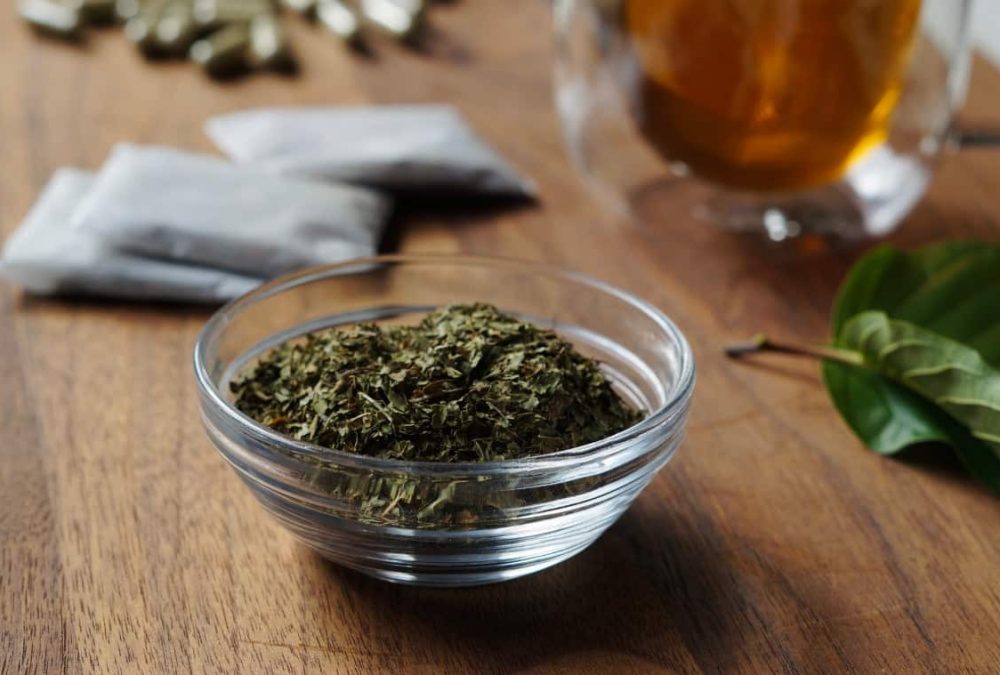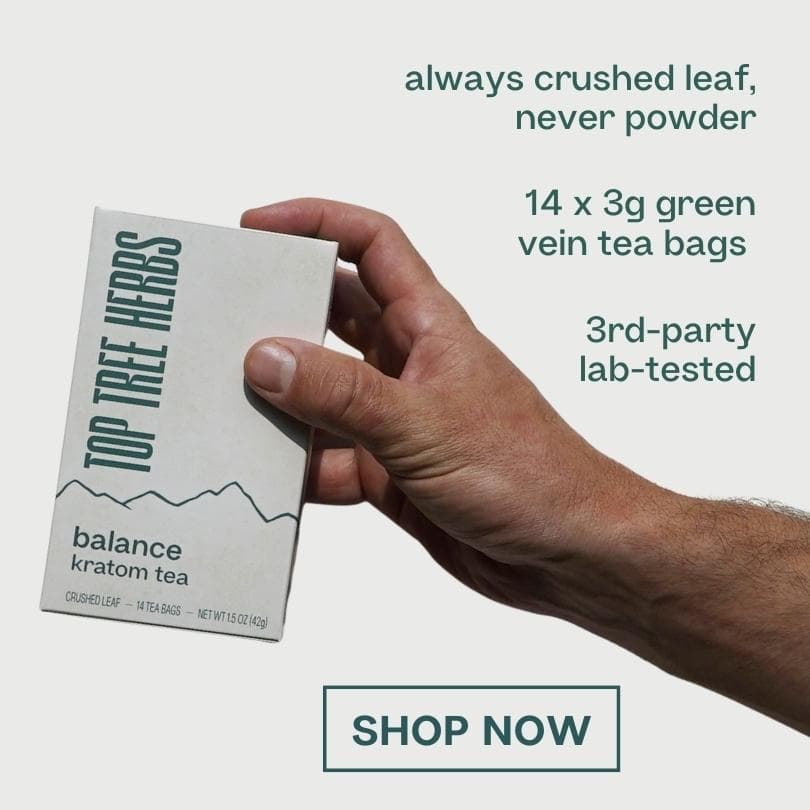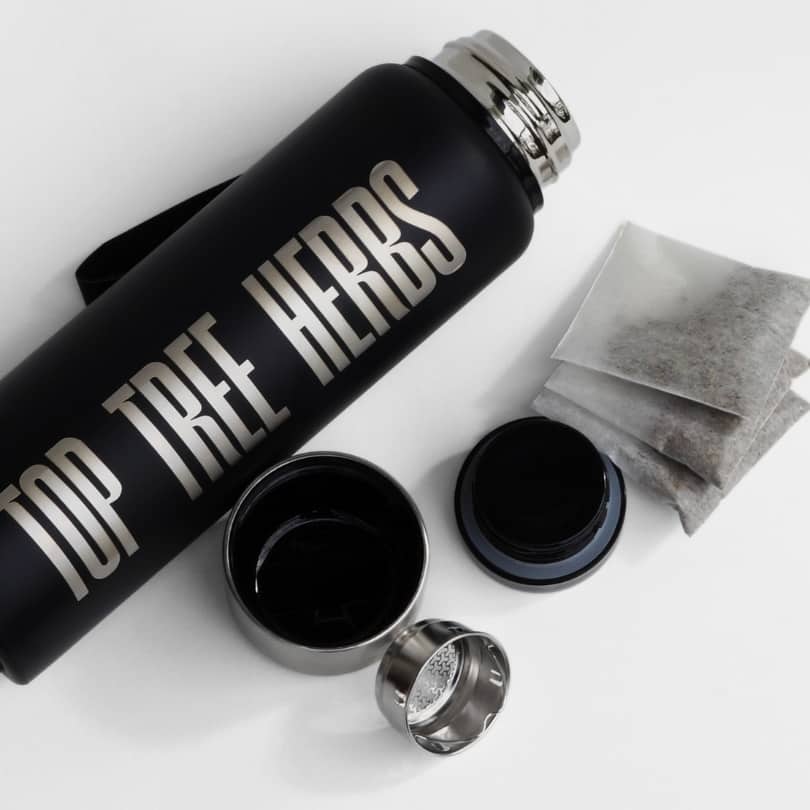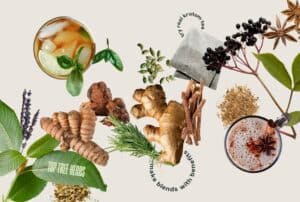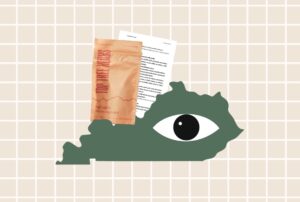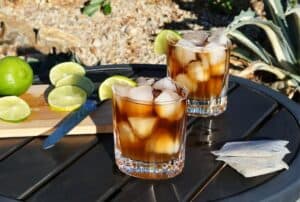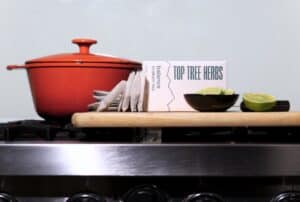Disgusted with toss and wash? Feel like retching at the sandy texture of a kratom powder slurry? Want to consume kratom in its traditional formulation? If so, you might want to learn how to make kratom tea with crushed leaf!
Before starting Top Tree Herbs, we were just kratom consumers looking for a better way to consume kratom. We found out how to make tea with crushed leaf kratom, and never looked back.
Why Make Crushed Leaf Tea Instead of Toss and Wash
“Toss and wash” is the process of putting kratom powder into your mouth and washing it down with water. If you’ve ever tried the cinnamon challenge, you probably understand how messy this process can be.
For those who don’t have a lot of experience with it, you may end up spilling powder or choking on a clump of dry leaf particles that get caught in the back of your throat.
Toss and wash is one of the most common ways people consume kratom. In fact, this is how Top Tree’s co-founder Soren Shade first tried kratom.
A Hard Powder to Swallow
When Soren first tried the toss and wash method, he would sneeze, cough, gag, and retch simultaneously. Then, he would be left with green stains dotting his shirt for the remainder of his day. Truth be told, he looked like a giant toddler or an herbalist-turned-Jackson-Pollack-imitator…
Once he got good at it, he was able to take it without even tasting it. There was still one major problem, however: stomach issues, which would then translate into bowel issues…
This shouldn’t really come as a surprise. Soren was eating somewhere between 3-5 grams of leaf powder into his body at a time, in some instances multiple times a day.
Humans are not cows. We don’t have a specialized organ to break down dry plant matter. So why do we frequently try to consume kratom in a way that’s not optimal?
There is absolutely no need to consume kratom in such a traumatizing way. In fact, the process of consuming kratom should be as pleasant as kratom’s effects!
So instead of tossing and washing, what can you do? Brew kratom tea, for one!
But what is kratom tea, really? How does tea made with crushed-leaf kratom differ from other products and drinks that people call “kratom tea”? Before we dive into how to make tea with crushed leaf, let’s compare the different methods for making tea with Mitragyna speciosa products. Then, we’ll determine which one is best in terms of both flavor and effects.
Kratom “Tea” Imitator: The Kratom Slurry
When you go some kava bars in Denver or Brooklyn and order “kratom tea,” what do you get? We’ll give you a hint: it typically does not resemble classic unsweetened iced tea or an herbal tea that you steep yourself at your table. Instead, you may be served a kratom slurry that’s dubbed “tea.”
You make a kratom slurry by mixing hot water with regular ol’ micronized kratom powder. You stir it a bit, then pray all the powder doesn’t settle to the bottom of the glass while you drink it. This “tea” concoction resembles matcha, but doesn’t dissolve as well and tastes even more bitter.
You can mix it with lemon and sweetener, which helps a bit. Nevertheless, it always feels like sandpaper on your tongue.
Some people find that a kratom slurry is easier to consume because it ensures you hydrate when consuming your kratom powder. However, despite the extra water content, for Soren and many other kratom consumers, drinking a kratom slurry still results in an upset stomach. Whethere hydrated or not, some individuals just find it uncomfortable to digest any leaf particles.
Following Traditional Wisdom Instead of Trade Economics When Making Kratom Tea
Though kratom may seem brand new in the United States, it has been consumed for centuries in Thailand and the rest of Southeast Asia. In Thailand, you would typically see farmers consume kratom to get through long days of physical labor.
Traditionally, people would simmer fresh leaves in a pot for several hours before dividing up the resulting tea into individual bottles and cups. The farmers would then drink it quickly on the spot or carry their kratom brew around with them throughout the day.
Alternatively, people take leaves straight from a kratom tree and chew on them for a few seconds. They absorb the alkaloids through the buccal membrane in their mouth, then spit out the leaf material.
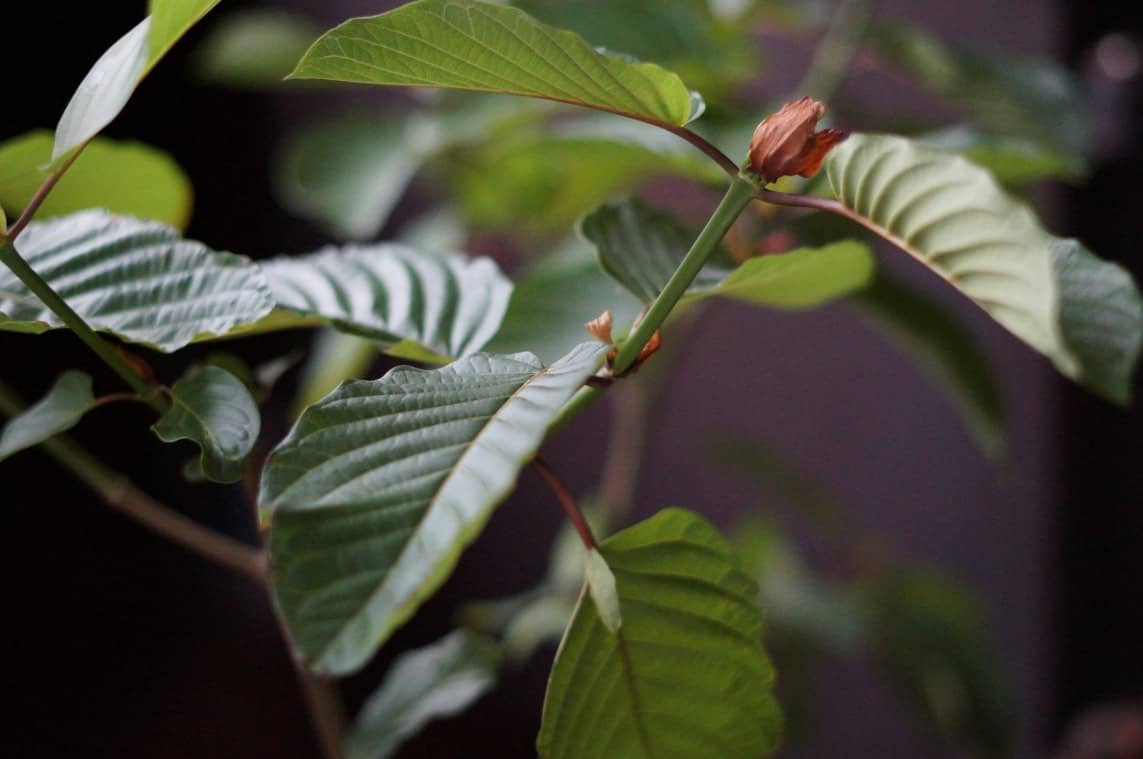
For thousands of years, kratom trees have grown wild throughout Thailand. Then, in the early 1940s, Thai communities started to consume kratom as a substitute for opium. At that time, opium was heavily taxed an unaffordable for many individuals. This reduced government tax revenue, and so the Thai government declared a war on kratom.
They banned kratom in 1943, and later mandated the destruction of all kratom trees. In an interesting twist, Thailand re-legalized kratom in 2021—after it greatly increased in global trade popularity and value.
While the traditional kratom practice was hurt by the government’s intervention, it’s legacy lived on through underground folk practice. Many Thai farmers continued to use kratom tea to help them with their work during the period in which it was criminalized.
How Did Kratom Powder “Tea” Become So Popular?
The common thread between the two traditional methods of consuming kratom is that people never actually swallow the leaves. Only in the Western markets has swallowing kratom powder come into vogue. No wonder over a quarter of American consumers report gastrointestinal discomfort from kratom!
Why are so many people outside of Southeast Asia drinking kratom slurries or tossing-and-washing? Well, the most economical way to get kratom from Southeast Asia to the United States is to first grind it into a fine powder.
Micronized kratom powder is thus ubiquitous in America in large part because it’s the cheapest option. You can find it in most head shops and gas stations, and it’s typically much cheaper per kilo than crushed leaf kratom. However, the low cost comes with downsides.
Why Crushed Leaf Kratom?
There are options for consuming kratom powder aside from just slurries or toss and wash. In fact, you can steep powder in water and then filter it to make a less-gritty drink. So then, since powder is cheaper and easier to find than crushed leaf, why would you still want to make crushed-leaf kratom tea instead of tea with powder?
For one, many cheaper kratom options aren’t tested for heavy metals or other possible contaminants. So the low-cost option may come with a cost for your short-term and long-term health.
Making Tea With Powder Requires More Tools and More Powder for a Sub-Par Result
For another, making tea with powder is both messy and less effective than making it with crushed-leaf kratom.
Unlike other herbal teas or black tea, tea made with Mitragyna speciosa leaves requires a high temperature and a long time to steep. A regular coffee filter won’t keep the water hot enough for long enough to extract a sufficient amount of alkaloids from the leaves. This is why some people who make tea with kratom powder recommended you use double your usual serving size to make tea. There goes the low-cost benefit!
You could instead use equipment like an insulated French press to keep the water hotter. However, French presses don’t have a filter that is fine enough to fully strain the micronized kratom powder.
Overall, it would take a lot of effort, dirty dishes, and wasted supplies to make tea using kratom powder.
Tea with Crushed Leaf Kratom Is Less Messy, More Effective, and Better-Tasting
Dried crushed-leaf kratom is the perfect solution to the problems mentioned above.
The leaf particles are larger so it is much easier to filter them out of your tea with a tea bag, tea ball, coffee filter, or French press. That means you end up with a delectable and smooth tea—no gritty texture, no putting unnecessary plant material in your stomach!
Making tea with fresh leaves is also great, but for those of us who don’t live in Southeast Asia and aren’t able to grow kratom trees, crushed-leaf is the best option. Plus, the drying process may positively affect the alkaloid content of the kratom leaves.
Researchers have suggested that some of the alkaloids oxidize when fresh leaves are dried and processed. In turn, the profile of effects of the kratom can be changed.
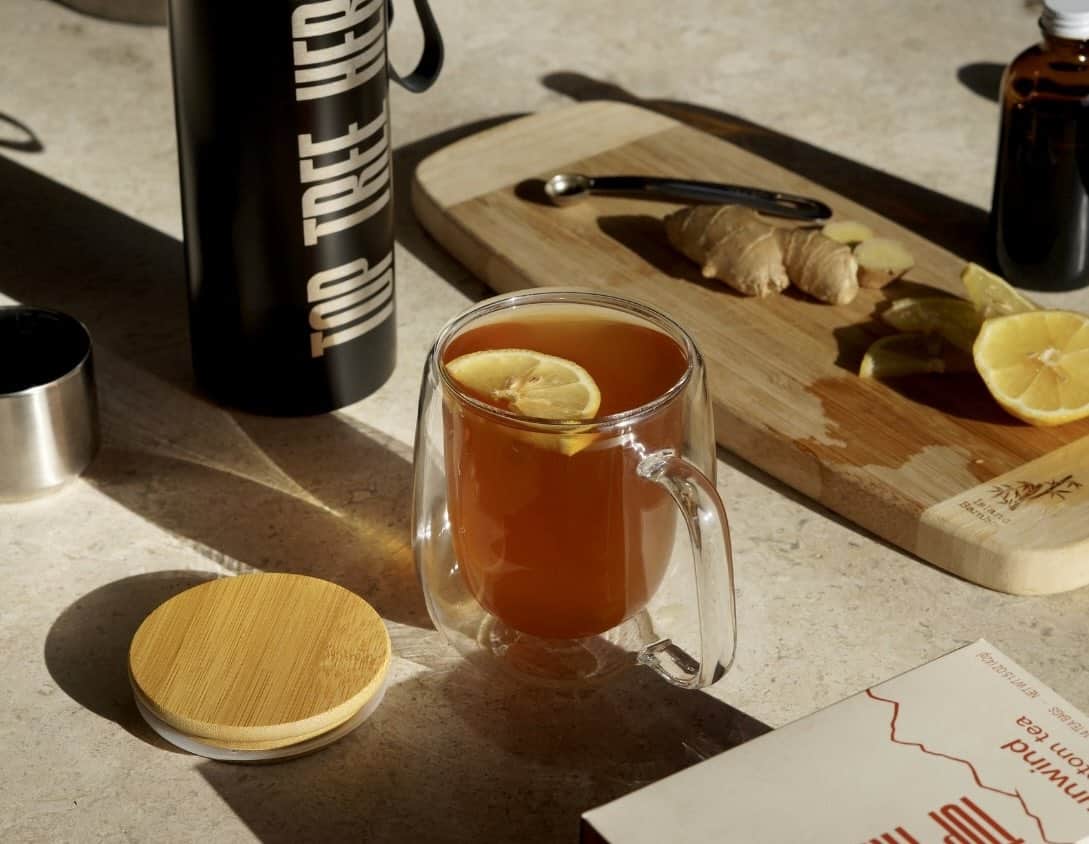
Kratom Tea with Crushed Leaf: The Recipe
So now that we’ve gone through the reasons why you would want to use crushed leaf kratom to make tea, let’s get into the “how” of it all!
Regardless of whether you’re buying kratom in pre-measured tea bags or using a steel mesh strainer, you’ll want to follow some guiding principles. We’ll give you the snappy version first of how to make tea with crushed leaf first, and then dig into the details.
Ingredients
- 1-2 crushed-leaf tea bags or 3-6 grams of loose leaf kratom
- 8-16 oz of water
- Optional: 1-2 tsp lemon juice for stronger tea
- Optional: 2 tsp sweetener of choice, more or less to taste
Equipment
- Insulated thermos or small saucepan
- Tea ball or fine mesh strainer (if your thermos doesn’t have one built in)
Directions
- Thermos: add crushed-leaf kratom and lemon juice to an insulated thermos. Boil water and pour over the kratom, then cap thermos.
- Stovetop: add crushed-leaf kratom, lemon juice, and cold water to a pot and bring to a boil, then cover and reduce to a simmer.
- Steep tea for 15-25 minutes in thermos or simmering water.
- Remove tea bags or strain out loose-leaf tea. If using a thermos with a built-in strainer, you can skip this step and just pour your tea straight into your mug.
- Steep the same kratom again for a slightly weaker second cup.
In-Depth Notes on the Brewing Process
Here are more in-depth directions and explanations for why we make our crushed-leaf kratom tea according to the steps listed above.
A common serving size for crushed-leaf kratom is around 3 grams, give or take. You can measure out loose leaf tea, or use pre-measured tea bags. The recommendations below are for 3-gram servings, so keep that in mind when you brew.
First, steep your crushed-leaf kratom at a high temperature, from 205-212°F (96-100°C). The hot water is crucial for making a strong cup of kratom tea because the it allows more alkaloids to migrate from the leaf matter into the water.
We recommend a thermos (or an insulated mug) for the brewing process because you can fill and forget about it. Just add your tea bags and boiling water to the thermos, then cap it so it retains heat while it steeps. If you’re brewing it on the stove, place your tea leaves or tea bags in cold water and bring it up to a boil, then reduce it to a simmer.
How Long Should You Steep Crushed Leaf Kratom?
Next, steep for around 15-25 minutes—not just 5-7 minutes like you would for most other herbal teas.
Some people prefer consuming very small amounts of kratom. If that’s you, try a 10-minute steep and then work your way up from there if the tea isn’t strong enough for you.
Others prefer to consume larger amounts of kratom. If you want a stronger brew, we’d recommend steeping your tea for longer (anywhere from 30 minutes to an hour), brewing with lemon juice, and/or using multiple servings of crushed-leaf kratom tea.
That brings us to the third important recommendation. We recommend boiling or steeping your crushed-leaf kratom with lemon juice or an equivalent acidic liquid to make your resulting tea stronger. The basic principle of this addition is to help the alkaloids leave the crushed leaf and enter the hot water.
Lime juice, apple cider vinegar, and even vitamin C are good options in a pinch if you don’t have lemon juice or a lemon on hand. For each serving, we recommend the juice from half a small lemon (2-3 teaspoons), more or less to taste.
Fourth, you can steep the same kratom leaves over again for a second cup of tea, which may be nearly as strong as the first. Depending on how long your initial steeps are, you may even be able to get a third cup out of the leaves!
Related: For even more tips and tricks, check out our classic guide for how to make kratom tea.
Finally, we recommend that once you’ve mastered the basics, you try brewing a specialty kratom tea recipe! There are so many ways to make kratom taste good, no matter which type of drinks or flavors you enjoy.
You can brew classic hot tea recipes using kratom leaf, or turn your tea into a cocktail or smoothie. Here are a few of our favorite recipes that go beyond just plain crushed-leaf kratom tea:
The Quickest, Tastiest, and Easiest Crushed-Leaf Kratom Option
Now that you understand the fundamentals of making tea with crushed leaf kratom, we’ll let you in on a little secret: Top Tree Herbs is the first and only kratom tea bag company in the world. We offer premium crushed leaf kratom sustainably sourced from Indonesia.
Kratom Tea Bags: Easy, Mess-Free, Travel-Friendly, and More
Our crushed leaf kratom comes in 3-gram tea bags, which makes it incredibly convenient and mess-free. You don’t have to weigh your kratom before consuming it like you have to with powder or loose leaf kratom. This makes them really easy to travel with.
We offer raw crushed leaf tea bags that contain 100% kratom. We also have flavored kratom blends, including a spiced chai red vein blend and a mango peach green vein kratom blend.
Importantly we have our crushed kratom leaf tested by an independent laboratory for its quality and alkaloid content.
In fact, we were the first company to test for all eight major kratom alkaloids, instead of just mitragynine and 7-OH-mitragynine. This includes mitragynine, paynantheine, speciogynine, speciociliatine, 7-OH-mitragynine, mitraphylline, isorhynchophylline, and corynoxine.
Crushed Leaf Kratom in Tea Bags Makes the Best Tea
All in all, there are hundreds of different ways you can consume kratom. You can swallow kratom powder, make a kratom slurry, take kratom capsules, or brew tea using a variety of recipes.
When you start to examine the benefits and drawbacks of each of these options, it quickly becomes apparent that making kratom tea with crushed leaf is the best. Not only will you be avoiding unnecessarily consuming of leaf matter and following the traditional preparation, you’ll also end up with the best kratom taste.
Whether you’ve used kratom powder in the past and didn’t love it, or if you’re just trying kratom for the first time, make kratom tea with crushed leaf to completely transform your kratom experience!
Cheers to better brewing, everyone!
